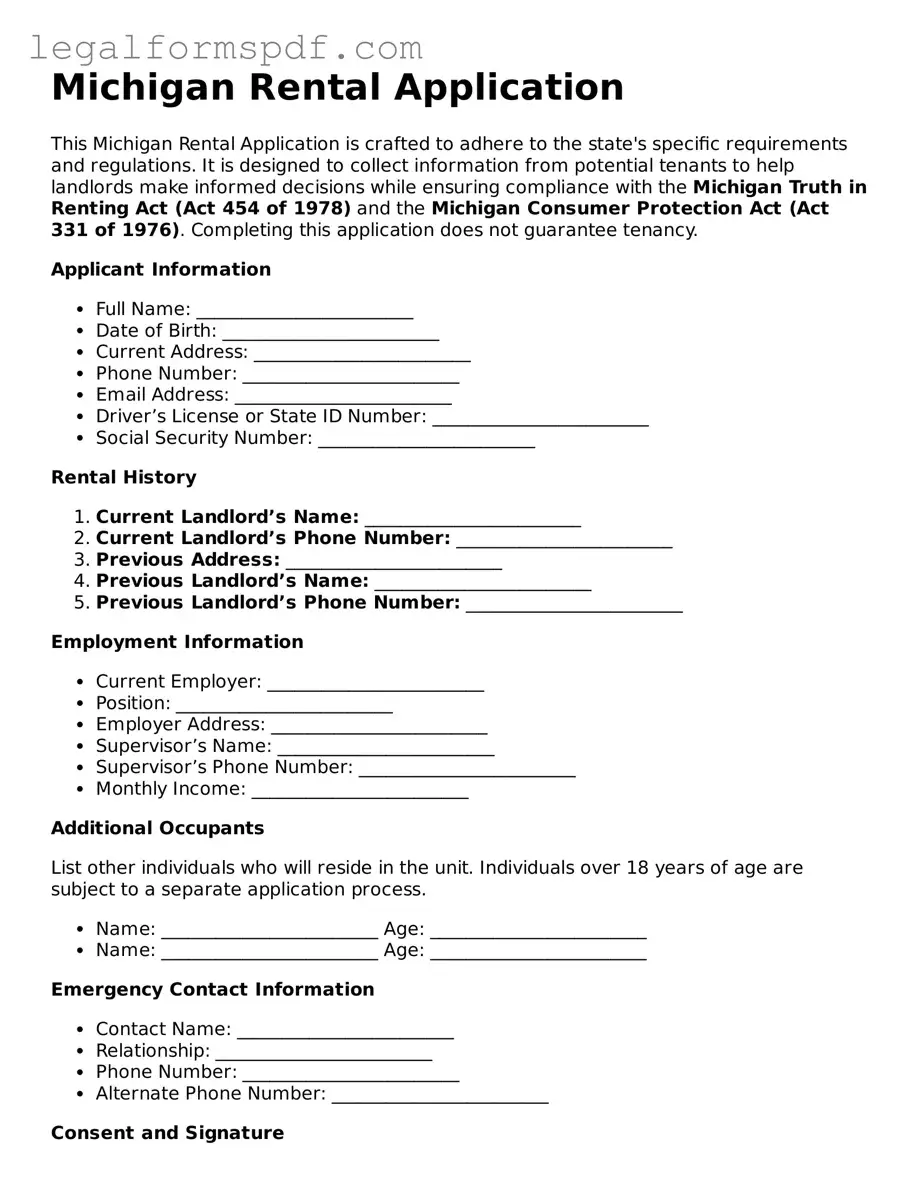The Lease Agreement is a document that shares a significant similarity with the Michigan Rental Application form, primarily because both serve as foundational elements in the establishment of a rental arrangement. While the rental application is a preliminary step, allowing landlords to screen potential tenants, the lease agreement cements the relationship, outlining the terms, duration, and obligations of both parties. Both documents are crucial in ensuring that expectations and legalities are clear from the outset of the tenancy.
A Credit Report Authorization form is another document closely related to the Michigan Rental Application form. This document grants the landlord permission to check a potential tenant's credit history, a step often required during the application process. By comparing an applicant's financial responsibility, landlords can make informed decisions, similarly to how the rental application gathers information to assess the suitability of a tenant.
The Employment Verification form is akin to the rental application in its function of gathering applicant information. While the rental application collects various pieces of personal and financial information, the Employment Verification form specifically confirms an applicant's employment status and income. Both documents aim to ascertain the potential tenant's ability to meet rental obligations.
A Guarantor Agreement parallels the Michigan Rental Application in that it is sometimes necessitated when the applicant's credentials might not meet the landlord's requirements. This agreement involves a third party who agrees to fulfill the lease obligations if the tenant cannot. The Rental Application identifies the need for such an agreement by revealing the applicant's financial standing.
Background Check Authorization forms are closely related to the Rental Application since both involve the assessment of the applicant's history. While the Rental Application requests information directly from the applicant, the Background Check Authorization allows the landlord to independently verify this information, examining criminal history, previous rental history, and more to ensure the reliability and safety of the potential tenant.
The Move-In Checklist is a document that is indirectly connected to the rental application process. It is used after a tenant has been approved via the application process. This checklist serves to document the property's condition at the time of move-in, ensuring that both parties are aware of and agree upon any existing damages or issues, thereby avoiding future disputes over responsibilities.
A Co-Signer Agreement has similarities with the Rental Application form, particularly in situations where the application reveals that the potential tenant might not financially qualify on their own. In such cases, a co-signer agreement is introduced, where an additional party agrees to take financial responsibility should the primary tenant fail to pay rent or cause property damage, offering a safety net that complements the initial screening process.
Renters Insurance Agreement forms, while not a direct part of the rental application process, are often encouraged or required following a successful application. This agreement ensures that the tenant has a policy covering personal property and liability, offering protection to both the tenant and landlord from unexpected circumstances. It’s a subsequent step that builds on the trust and responsibility established in the application process.
The Property Management Agreement is a document that, like the Michigan Rental Application, is fundamental in establishing roles and responsibilities, but between a property owner and a management company. This agreement outlines the manager's duties, which often include screening potential tenants through the application process, reflecting the interconnected nature of these documents in maintaining a rental property’s operations.
Lastly, the Pet Agreement form is often an addendum to the rental arrangement decided upon through the application process. It specifies the terms under which a tenant can keep a pet on the property, including restrictions and any additional fees. The need for such an agreement is typically identified during the application process when the applicant discloses pet ownership, highlighting another layer of compatibility and agreement between tenant and landlord.
